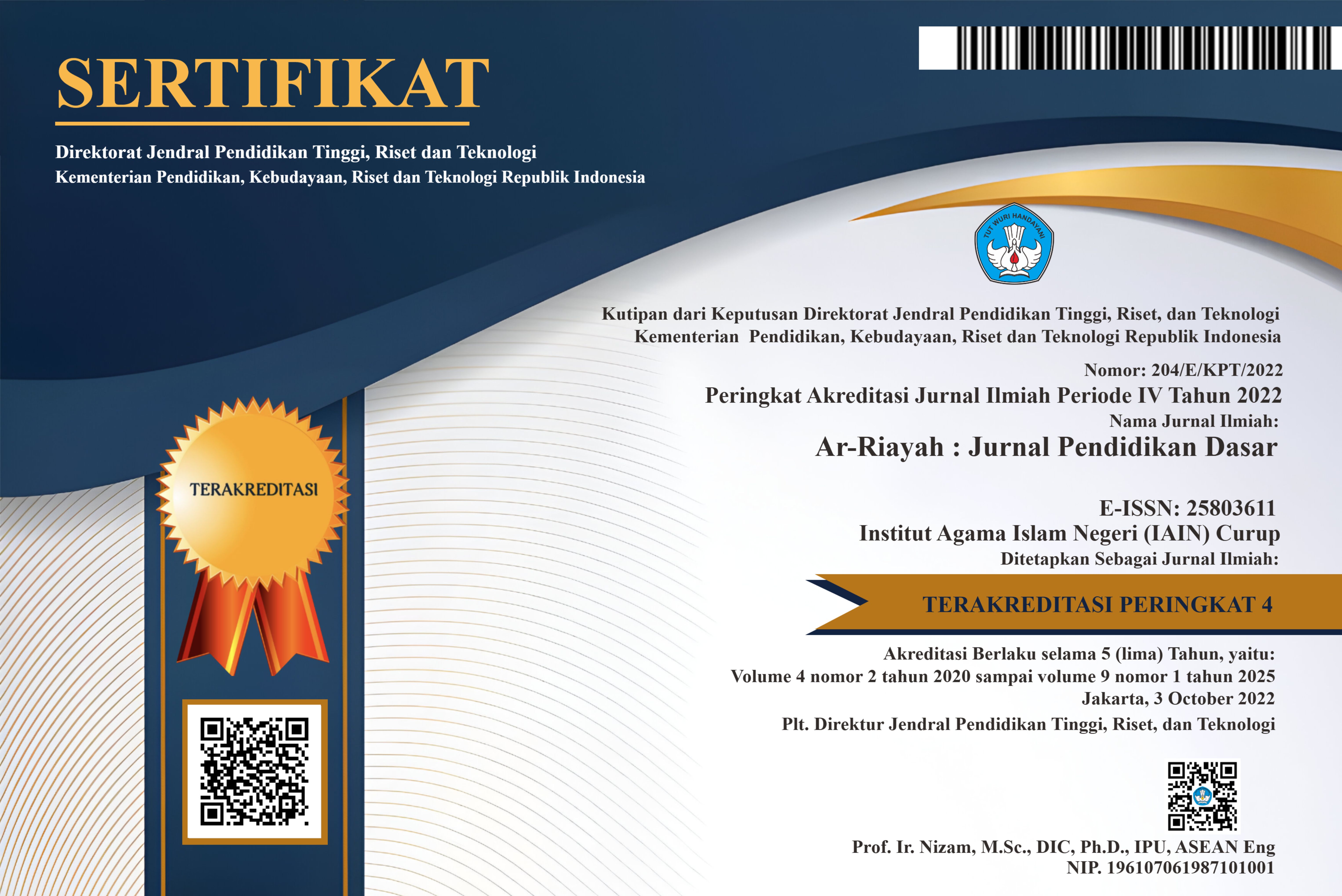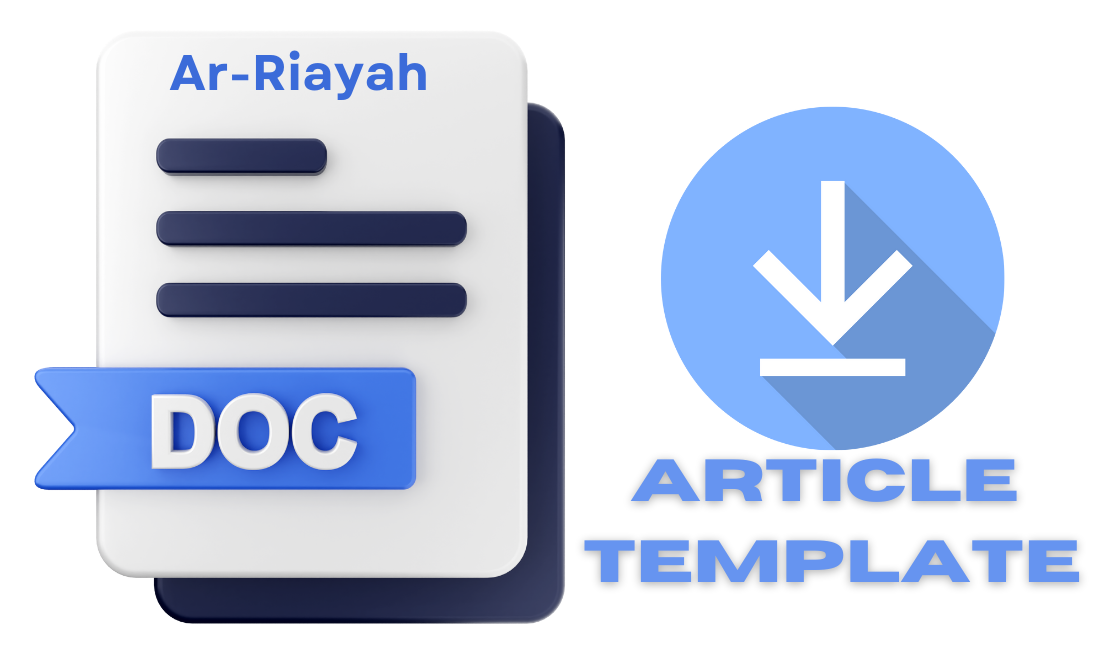An Analysis of the Use of Puzzle-Based Learning Media in Enhancing Students' Interest in Science Subjects in Grade V at SD Negeri 19 Tulang Bawang Udik
DOI:
https://doi.org/10.29240/jpd.v9i1.12766Keywords:
Puzzle-Based Learning Media, Students' InterestAbstract
Puzzle learning media is widely applied at elementary school level because it is useful in focusing students' attention and motivating. This media not only functions as a tool to increase students' concentration, but is also an effective way to increase interest in learning. By using interesting and interactive learning media, such as puzzles, students can learn in a fun way while increasing their understanding of the material being taught. The aim of this research is to find out how the use of puzzle learning media can increase students' interest in learning in science subjects in Class V of SD Negeri 19 Tulang Bawang Udik. This research uses a qualitative approach with descriptive methods. The data collection techniques used were interviews, observation and documentation. The subjects of this research were teachers and students of class V at SD Negeri 19 Tulang Bawang Udik. This research data was analyzed by data reduction, data presentation, and drawing conclusions or verification. The results of this research show that the use of puzzle learning media can increase students' interest in learning. This is characterized by an increased sense of enjoyment in the learning process, active involvement of students, students' interest in the material and participating in learning well, showing students' attention to the learning process, showing students' attention, such as listening to the teacher's explanation.
Downloads
References
Andarusni, Alfansyur, & Mariyani (2020) Seni Mengelola Data : Penerapan Triangulasi Teknik, Sumber Dan Waktu Pada Penelitian Pendidikan Sosial. Jurnal Kajian, Penelitian & Pengembangan Pendidikan Sejarah, 5(1), 146–150. https://doi.org/10.31764/historis.v5i2.3432
Aftika, Siti Nur. (2020). “Penerapan Media Puzzle Untuk Menumbuhkan Keterampilan Membaca Permulaan Siswa Pada Pembelajaraan Tematik Kelas I SDN Ragunan 012.” Universitas Islam Negeri Syarif Hidayatullah Jakarta
Antoro, B., Amelia, M. M., Hakim, L., & Rozi, F. (2023). Inovasi Media Pembelajaran Matematika Menggunakan Puzzle untuk Menumbuhkan Minat belajar peserta didik SDN 064024 Medan. Jurnal Madaniya, 4(1), 399–404. https://doi.org/https://doi.org/10.5 3696/27214834.372
Ernis, P., & Hazmi, N. (2021). Peningkatan Hasil Belajar Ipa Materi Komponen Ekosistem Melalui Media Puzzle Siswa Kelas V SD Negeri 01 Gunuang Malintang Kecamatan Pangkalan Koto Baru. Journal of Elemantary School (JOES), 4(1), 45–56. https://doi.org/https://doi.org/10.3 1539/joes.v4i1.2202
Hayati, I. A. (2023). Media Puzzle Untuk Menumbuhkan Hasil Belajar Cerita Dongeng Dalam Pembelajaran Bahasa Indonesia di Sekolah Dasar. Jurnal Educatio, 9(2), 440–444. https://doi.org/10.31949/educatio .v9i2.3043
Indriyanti, L., Gani, A. A., & Muhardini, S. (2020). Pengembangan Media Puzzle untuk Menumbuhkan Hasil Belajar Siswa Kelas 1 SDN 38 Mataram. Jurnal CIVICUS : Pendidikan-PenelitianPengabdian, 8(2), 108–118. https://doi.org/https://doi.org/10.3 1764/civicus.v8i2.2931
Kartini, I. A. K. P. (2023). Penggunaan Media Puzzle untuk Menumbuhkan Hasil Belajar Peserta Didik pada Tema Kegemaranku. Journal of Education Action Research, 7(3), 303–309. https://doi.org/https://doi.org/10.2 3887/jear.v7i3.67292
Ramdani, A., & Nuraeni, T. (2020). Pengaruh Penggunaan Media Puzzle terhadap Minat dan Hasil Belajar Siswa pada Mata Pelajaran IPA di Sekolah Dasar. Jurnal Pendidikan Dasar Nusantara, 5(1), 45-52.Maulidah, A. N. (2021). Penggunaan Media Puzzle secara Daring terhadap Hasil Belajar IPA Kelas V SD. Jurnal Mimbar Ilmu, 26(2), 281–286. https://doi.org/https://doi.org/10.2 3887/mi.v26i2.37488
Mekarisce, A. A. (2020). Teknik Pemeriksaan Keabsahan Data pada Penelitian Kualitatif di Bidang Kesehatan Masyarakat. JURNAL ILMIAH Kesehatan Masyarakat : Media Komunikasi Komunitas Kesehatan Masyarakat, 12(3), 145–151. https://doi.org/10.52022/jikm.v12i3.102
Putri, S. A., Destiniar, D., & Suned, S. (2022). Pengaruh Penggunaan Media Puzzle Pecahan Terhadap Hasil Belajar Matematika Siswa Kelas III SD Negeri 100 Palembang. Jurnal Pendidikan Dan Konseling, 4(4), 1783–1789. https://doi.org/https://doi.org/10.3 1004/jpdk.v4i4.5553
Surtika, Tika, Sumardi, Sumardi, & Yasbiati, Yasbiati. (2020). Pengaruh Media Puzzle Huruf Terhadap Kemampuan Mengenal Huruf Pada Anak Kelompok A Di TK ArRahman Kecamatan Sukahening. Jurnal Paud Agapedia, 3(1), 101–111.
Nur, Rumakhit. (2020). “Pengembangan Media Puzzle Untuk Pembelajaran Materi Mengidentifikasi Beberapa Jenis Simbiosis Dan Rantai Makanan Kelas IV Sekolah Dasar.” Jurnal Simki-Pendagogia 1 (2): 6
Syarif, M. I., Subhan, S., Indriani, M., Safrizal, S., & Wardahni, N. E. Pendas: Jurnal Ilmiah Pendidikan Dasar, ISSN Cetak : 2477-2143 ISSN Online : 2548-6950 Volume 09 Nomor 04, Desember 2024 138 (2022). Pengembangan Media Pembelajaran Ipa Berbasis Puzzle Rantai Makanan Dan Augmented Reality. Jurnal Ibriez, 7(2), 171–180. https://doi.org/https://doi.org/10.2 1154/ibriez.v7i2.284
Utami, R. S. (2022). Hubungan Antara Minat Belajar dengan Prestasi Belajar Siswa. Jurnal Psikologi dan Pendidikan, 7(2), 33-40.
Zaputra, R., Festiyed, F., Adha, Y., dan Yerimadesi, Y. (2021). Meta-Analisis: Validitas Dan Praktikalitas Modul Ipa Berbasis Saintifik. Bio-Lectura, 8(1), 45–56. https://doi.org/10.31849/bl.v8i1.6039
Edy Syahputra, Snowball Throwing Tingkatkan minat dan hasil belajar, Sukabumi: Haura Publishing, 2020
Sidiq, U., & Choiri, M. M. (2022). Metode Penelitian Kualitatif di Bidang Pendidikan(1st ed.). Ponorogo: Nata Karya.
Sugiyono,(2021) Metode Penelitian Pendidikan (pendekatan kuantitatif, kualitatif, dan R&D), (Bandung : Alfabeta,), hlm. 10
Downloads
Published
How to Cite
Issue
Section
Citation Check
License
Copyright (c) 2025 Asri Nuraini, Masrurotul Mahmudah; Nurul Aisyah

This work is licensed under a Creative Commons Attribution-NonCommercial-ShareAlike 4.0 International License.
Authors who publish with Ar-Riayah: Jurnal Pendidikan Dasar agree to the following terms:
Authors retain copyright and grant the journal right of first publication with the work simultaneously licensed under a Creative Commons Attribution-NonCommercial-ShareAlike 4.0 International License (CC BY-NC-SA 4.0) that allows others to share the work with an acknowledgment of the work's authorship and initial publication in this journal.
Authors are able to enter into separate, additional contractual arrangements for the non-exclusive distribution of the journal's published version of the work (e.g., post it to an institutional repository or publish it in a book), with an acknowledgment of its initial publication in this journal.
- Authors are permitted and encouraged to post their work online (e.g., in institutional repositories or on their website) prior to and during the submission process, as it can lead to productive exchanges, as well as earlier and greater citation of published work (See The Effect of Open Access).










